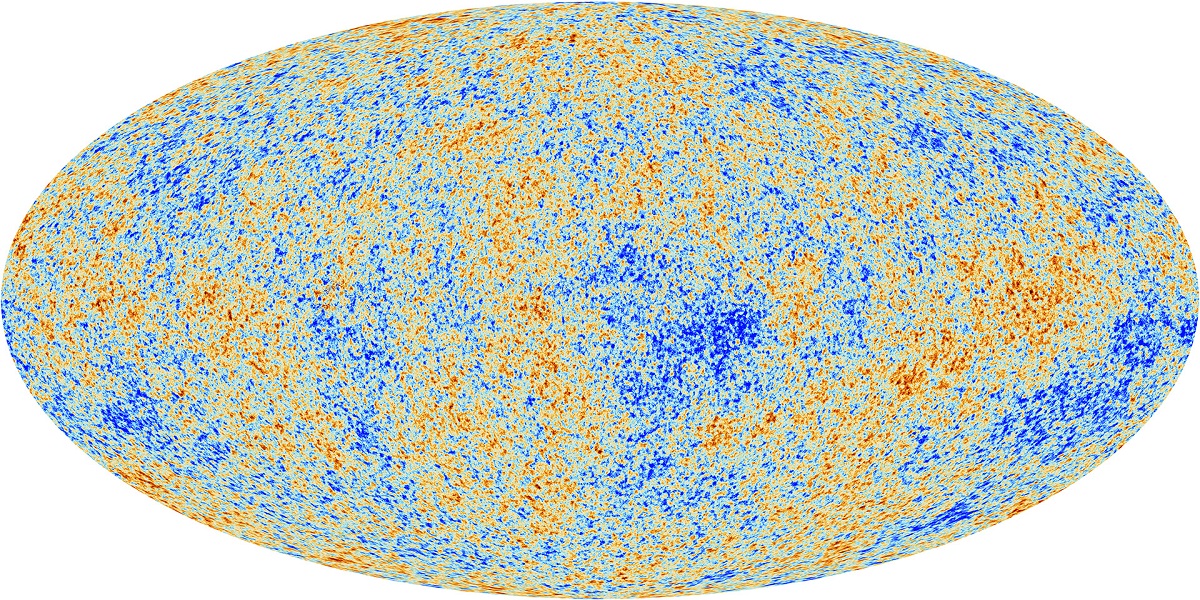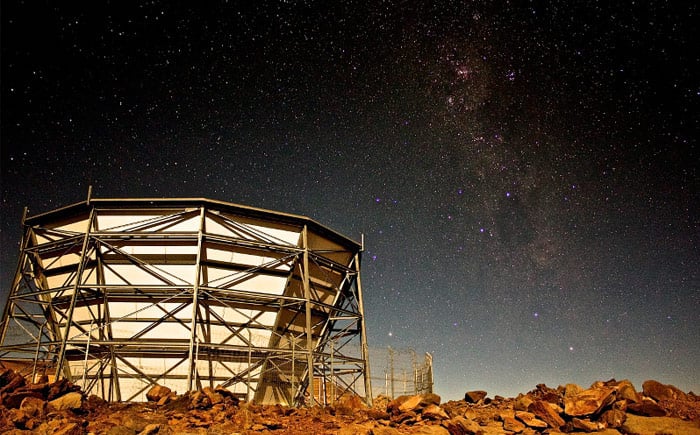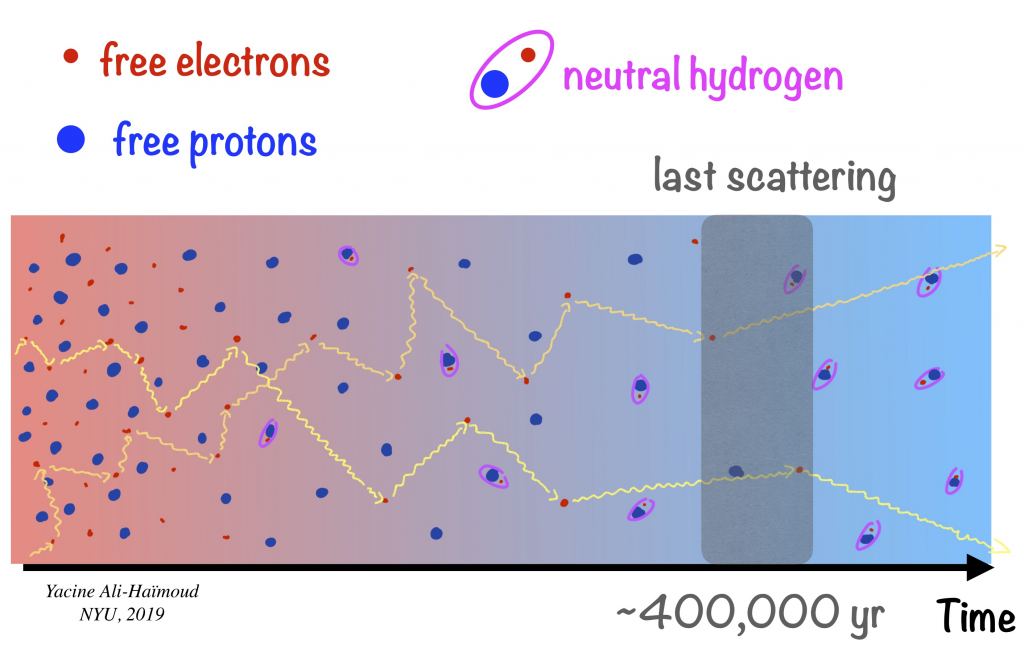The oldest light in the universe is that of the cosmic microwave background (CMB). This light was formed when the dense matter at the beginning of the universe finally cooled enough to become transparent. It has traveled for billions of years to reach us, stretched from a bright orange glow to cool, invisible microwaves. Naturally, it is an excellent source for understanding the history and expansion of the cosmos.
The CMB is one of the ways we can measure the rate of cosmic expansion. In the early universe, there were small fluctuations of density and temperature within the hot dense sea of the big bang. As the universe expanded, the fluctuations expanded as well. So the scale of fluctuations we see in the cosmic microwave background today tells us how must the universe has grown. On average, the fluctuations are about a billion light-years across, and this gives us a value for the rate (the Hubble parameter) as somewhere between 67.2 and 68.1 km/sec/Mpc.
Of course, the CMB isn't the only way you can measure the Hubble parameter. In an earlier post, I talked about how you can use variable stars and distant supernovae to create a cosmic distance ladder that tells you the rate of expansion. The problem is, this alternative method gives a larger value for the Hubble parameter. If the supernova method is right, then the universe is younger and has expanded more quickly than the CMB scale seems to support. For a while, the hope has been that new observations and new methods of measuring cosmic expansion would solve this problem, but a new study dashes those hopes. This study looked at the cosmic microwave background using the Atacama Cosmology Telescope (ACT) in Northern Chile.
Most detailed observations of the CMB are made with satellites such as the Planck satellite. Being in space gives you a clear view of the cosmic remnant heat, letting you measure temperature fluctuations. The Atacama Cosmology Telescope is land-based, but it's high in the Andes, where the air is very thin and dry, so it gets a reasonably good view of the CMB. But it is also specially designed to look at the polarization of the cosmic light.
The early universe was filled with light, but because it was so hot and ionized, photons couldn't travel far before scattering off a proton or electron. But around 380,000 years after the big bang, matter in the early universe cooled enough to become neutral hydrogen and helium, which is largely transparent to light. The CMB light we see made one last scattering before things cleared enough for it to reach us. When light scatters off something, it is oriented, or polarized, relative to that scatter. Thus all the CMB light is polarized, and its orientation tells us about the early universe.
The team used this polarization to determine the age and expansion rate of the cosmos. Just as the size of uniform temperature regions in the CMB tells us the rate of cosmic expansion, so does the size of uniform polarization regions. The team measured the polarization scale more precisely than ever before and determined the Hubble parameter is between 66.4 and 69.4 km/sec/Mpc. This gives the age of the universe as 13.77 billion years, which is consistent with Planck's measurements of the CMB.
So now we have two independent precision measures of cosmic expansion from the CMB, and they agree. But other measurements using supernovae disagree, so there's clearly something we don't understand here. At this point what is clear is that some aspect of our cosmological model needs to be revised.
Reference: Choi, Steve K., et al. "The Atacama Cosmology Telescope: a measurement of the cosmic microwave background power spectra at 98 and 150 GHz." *Journal of Cosmology and Astroparticle Physics* 2020.12 (2020): 045.
 Universe Today
Universe Today


